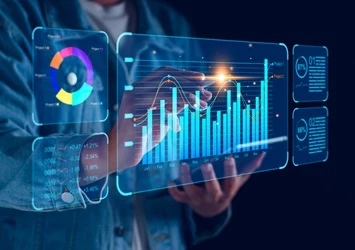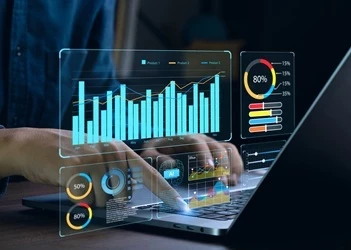What is IoB?
The Internet of Behaviors is supercharging the development of innovation today.
Add bookmark
Many cite 2012 as the beginning of the Internet of Behaviors (IoB) for this is when the psychology professor Gothe Nyman described the possibility of obtaining detailed data on customers’ use and behavior as they interacted with the Internet of Things (IoT).
Of course, the monitoring of consumer behaviour predates this coinage by some time — consumer research has long been a method of understanding consumer behaviour after all. However, what is different about IoB is that this is the automation of such research, involving the leveraging of massive amounts of data (generated by IoT) that is then used to create more enhanced procedures and products. The easiest way to think about IoT and IoB is that IoT is the data generation, while IoB is its analytics.
The internet of behaviours refers to the vast array of devices and platforms that are used to facilitate interactions between people. These devices and platforms can be anything from smartphones to social media networks. The significance of these devices and platforms is that they are non-stationary, meaning that people are mobile with their devices and not restricted to staying in one place to conduct transactions or interact with others.
This mobility has led to a proliferation of new ways for people to interact with each other. At the same time, it has also led to the growth of many new technology-based businesses that rely on the collection of big data from consumers and their interactions (e.g. Facebook).
IoB then refers to a process by which user-controlled data is analysed through a behavioural psychology perspective and, with the results of that analysis, it informs new approaches to designing a user experience (UX), search experience optimisation (SXO), and how to market the end products and services offered by companies. Consequently, for a company to conduct IoB is technically simple, but psychologically complex. It requires statistical studies to be conducted that map everyday habits and behaviours without fully disclosing consumer privacy for ethical and legal reasons.
In addition, IoB combines existing technologies that focus on the individual directly such as facial recognition, location tracking and Big Data. It is therefore a combination of three fields: technology, data analytics and behavioural psychology.
Why do businesses need to use IoB?
The need for the use of data in this space comes from two sources; firstly the need to capture behaviour at scale (i.e. when the human actions are carried out en masse), and secondly we need to enable a smart conversation between the data and the things that humans are doing (by linking the data sets together to enable context & content relevance).
An understanding of both of these things is required in order to fully leverage the potential of consumer data within organisations; through the application of this understanding, we are potentially able to transform how businesses operate, and how they interact with their customers.
Data is at the heart of successful innovation; the ability to take all the data that exists in our world - the vast quantities of information that we generate through our day-to-day lives - and use it effectively to unlock new insights and achieve unprecedented business results.
How are businesses leveraging IoB?
Some of the most successful industries have used IoB in order to achieve success. From manufacturing to marketing, retail to insurance, IoB is improving processes in almost every field today.
Perhaps the most clear-cut day-to-day example of IoB is fitness trackers. Fitness trackers have seen incredible gains in past years, as the pandemic has seen a seismic shift to bringing health into the mainstream (the fitness tracker market witnessed 19.5% growth in 2020 alone).
Fitness trackers use IoB to collect data in order to tailor their products to their consumers, with the most obvious example, Fitbit, doing exactly that by gathering data on the number of steps taken each day as well as measuring stress levels via heart rates. This information can then be shared with other users to encourage them to engage in a healthier lifestyle (such as sharing health tips and motivational messages).
Similarly, the smart mirror developed by researchers at Nanyang Technological University in Singapore uses biometrics to monitor the daily activity of its users and to provide them with tailored feedback and recommendations based on their individual activity levels. This data is then aggregated on a public platform to allow other users to benefit from insights provided by others.
Other wearables using IoB are tools which monitor health and environmental conditions to provide early warnings of potential health risks, a use case which is becoming increasingly important in recent years as the pandemic has led to a situation wherein the monitoring of disease is more paramount than ever before. IoB wearables can monitor vital signs such as temperature, heart rate and oxygen saturation level in order to sends a notification to the user if the readings indicate that the individual is experiencing symptoms of respiratory disease or has fallen ill.
Such monitoring was particularly prevalent in the manufacturing space, wherein employees in this industry were the first back during the pandemic years, and as such had to adhere to safety protocols imposed to protect both themselves and fellow workers.
Furthermore, smart home devices can be used to automate the heating or lighting controls in office buildings during unoccupied hours in order to reduce the energy consumed by these systems and reduce their carbon footprint or reduce cost.
The goal of IoB is to integrate online interactions and physical experiences to improve the way people interact with their environment and interact with one another, so the breadth of its use cases is pretty much the same as IoT: everything and everywhere.






























